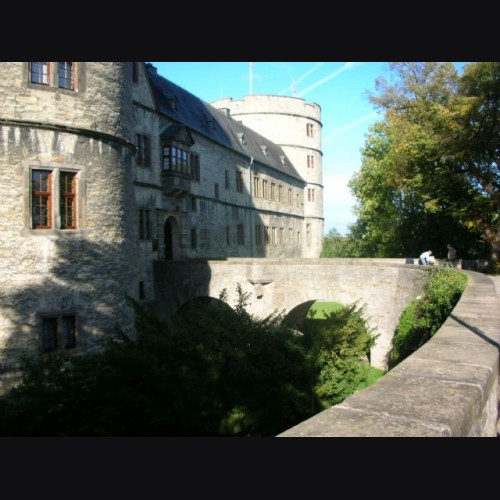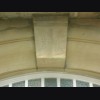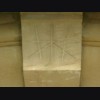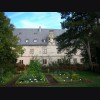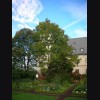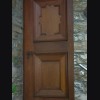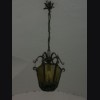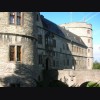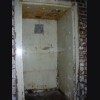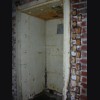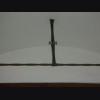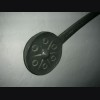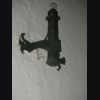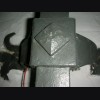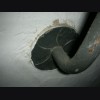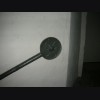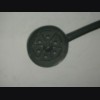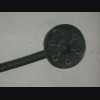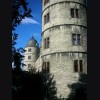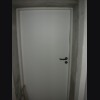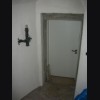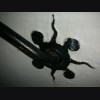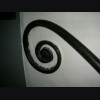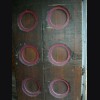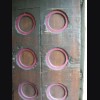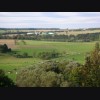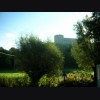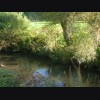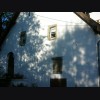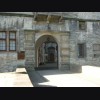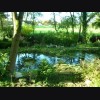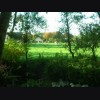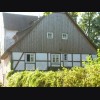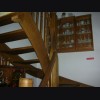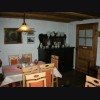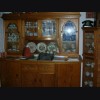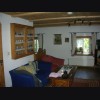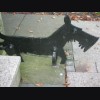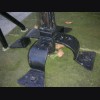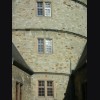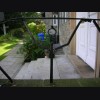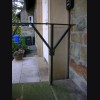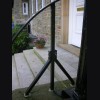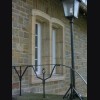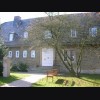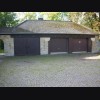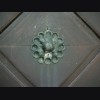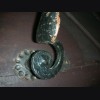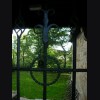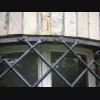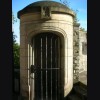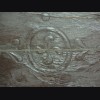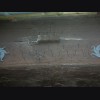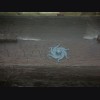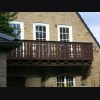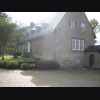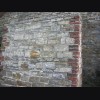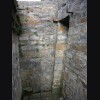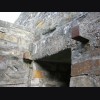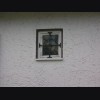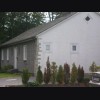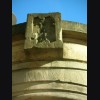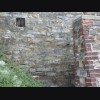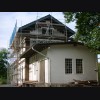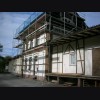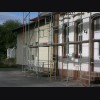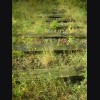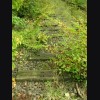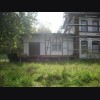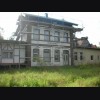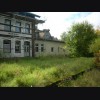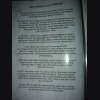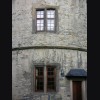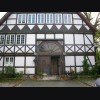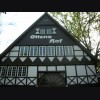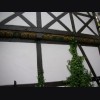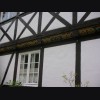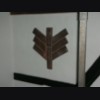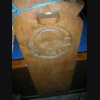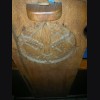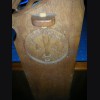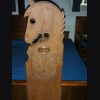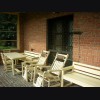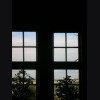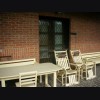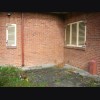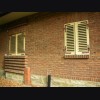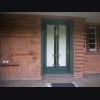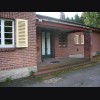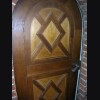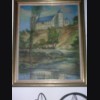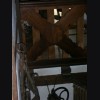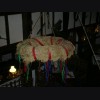Wewelsberg Castle # 1060
The trip to Wewelsberg was
taken within the first few days of my arrival in Germany, I had planned
this part out pretty well and it was a fairly short drive from Cologne
on the Autobahn and I knocked it out in under two hours. The plan was to
do the castle and spend the night and hit the surrounding areas. The
surrounding areas are just as interesting as the castle in some cases
and the trip went off without a hitch really.
While I have
tinkered with writing up the history of this castle for some time, I can
never seem to get to it as its not simple and no matter which way I
come at it I end up hitting the delete button and blowing it up. So, for
those that have interest in this castle I would recommend the most
definitive reference on the topic " Heinrich Himmler's Camelot" by
Cooke/ Russell. And I will take the easy route and wing it.
The
castle built in the 17th Century has much history, but its lure is that
it was the centerpiece for Himmler's SS and the ideology which actually
predates the castle, his inner circle of SS men and the re-incarnation
of Pagan culture upon the ranks of the SS.
The ride to the
castle is a treat as its all rolling hills and farmland and little rural
towns of friendly people who speak really no English at all, so have a
guide and set your navigation correctly.
At the base of the castle is an old mill which serves as a bed and breakfast.Ever's Old Mill which looks directly up on the castle from the valley and serves as a perfect environment to stay for such a place as the castle and is several hundred years old, you can literally walk from the front door up to the castle or drive a few minutes right into the parking lot.
The
tour that the castle had given has changed in the last year, in
previous years the role of the SS has been downplayed out of fear that
the far right would utilize the castle for pro Nazi propaganda. The new
tour has much more to see and is pretty good and starts in the basement
of the admin building and then makes its way to the castle itself. While
the new tour is much better and worth the trip, the fear is still there
as they do make it a point to make it hard to photograph artifacts with
obstructions so right wingers can't have their photos taken next to
items or displays. This is a German thing, the premise being if you
can't photo a chair, its no danger. So, I just did not photo anything
but among the items on display were items that I had not actually seen
in person before, and many items that I have seen or handled.
Once through the main display area you get to the castle which is split in two separate tours, one for the ancient aspects, and the other for the Third Reich. I was surprised that the crypt area was pretty much a lounge where you could just hang out without being bothered, of course they saw fit to hang 50's Judaic art around the perimeter so not to be insensitive to the history as opposed to being accurate. Upstairs in the tower area are bean bag chairs scattered about as the castle serves as a youth hostel. While I have not seen a bean bag chair since 1975 they are still comfortable and you can lounge there as well.
Walking the grounds and through the castle itself makes the trip worth while, and much like my Dachau experience, the surrounding areas would be as interesting if not more in some cases but here again you run the risk of garnering attention with your camera in rural areas where people do not want to be bothered with history and tend to be guarded.
In the
end the trip was worth while and even though it tends to be a wee bit
politically correct I was able to garner some good photos of the
interior castle inclusive of the blown safe area and the entrance to
Himmler's private rooms. The wrought iron work is neat and while one
very tall candelabra was on display in the tour area, the matching
example was in the tower and could be handled and examined in person.
Once done with the castle and hungry, the restaurant across the street was looking pretty good, what I did not know was that this restaurant was full of SS and N.S artifacts and architecture that lay untouched, this building is protected by the state as an historical building and simply move a wreath and you have symbolic remnants of the Third Reich era. Interior and exterior shots of that I took and have included.
A
short drive down the road and you run into the train station where the
labor force utilized by the SS to reconstruct the castle would arrive, I
was not aware it still stood and the railway was intact minus the steel
track. The labor for this project would be camp labor and cost approx.
1300 lives.
Down the street a bit further is the home of Herman Bartels, the SS Architect responsible for the renovations of the castle under Himmler, and to design the rooms for SS ceremonial use. The home is currently a church, but a look around would clue one in pretty quick with the iron and wood work. The railing with the life and death runes, and a little wrought iron dog in which to scrape ones shoe before entering intact. A adjacent structure of wood bearing runic symbols and wrought iron work to one of the garages is also plain to see.
Another
quick trip around the corner and your in a residential area where homes
of SS members were situated, these are easily recognized as directly
across from the front doors of the homes are stone bunkers. The bunkers
would serve to protect from an allied bombing raid and all one would
have to do is run out the front door and into the bunker. These can be
difficult areas and after shooting a piece of iron work on the from of a
home, we were met by the homeowner who was cordial but had us moving
out pretty quick.
It is said that history takes 100 years
before it comes together in a way where it can be looked at with
objectivity or understanding. It has been 65 years since the end of the
war and it would appear that while the wounds are still open, that
Germany is making an attempt albeit slowly, to open the door to the era
in a fashion that an only be described as cautious. But its a good
attempt and by all accounts better than before.
The history
of Wewelsberg is significant and less than simple, and while at times it
is clearly presented in a politically correct fashion, it is being
presented. The tour of Wewelsberg and the surrounding area's is
certainly worth seeing.
(Wewelsberg Castle )
The trip to Wewelsberg was
taken within the first few days of my arrival in Germany, I had planned
this part out pretty well and it was a fairly short drive from Cologne
on the Autobahn and I knocked it out in under two hours. The plan was to
do the castle and spend the night and hit the surrounding areas. The
surrounding areas are just as interesting as the castle in some cases
and the trip went off without a hitch really.
While I have
tinkered with writing up the history of this castle for some time, I can
never seem to get to it as its not simple and no matter which way I
come at it I end up hitting the delete button and blowing it up. So, for
those that have interest in this castle I would recommend the most
definitive reference on the topic " Heinrich Himmler's Camelot" by
Cooke/ Russell. And I will take the easy route and wing it.
The
castle built in the 17th Century has much history, but its lure is that
it was the centerpiece for Himmler's SS and the ideology which actually
predates the castle, his inner circle of SS men and the re-incarnation
of Pagan culture upon the ranks of the SS.
The ride to the
castle is a treat as its all rolling hills and farmland and little rural
towns of friendly people who speak really no English at all, so have a
guide and set your navigation correctly.
At the base of the castle is an old mill which serves as a bed and breakfast.Ever's Old Mill which looks directly up on the castle from the valley and serves as a perfect environment to stay for such a place as the castle and is several hundred years old, you can literally walk from the front door up to the castle or drive a few minutes right into the parking lot.
The
tour that the castle had given has changed in the last year, in
previous years the role of the SS has been downplayed out of fear that
the far right would utilize the castle for pro Nazi propaganda. The new
tour has much more to see and is pretty good and starts in the basement
of the admin building and then makes its way to the castle itself. While
the new tour is much better and worth the trip, the fear is still there
as they do make it a point to make it hard to photograph artifacts with
obstructions so right wingers can't have their photos taken next to
items or displays. This is a German thing, the premise being if you
can't photo a chair, its no danger. So, I just did not photo anything
but among the items on display were items that I had not actually seen
in person before, and many items that I have seen or handled.
Once through the main display area you get to the castle which is split in two separate tours, one for the ancient aspects, and the other for the Third Reich. I was surprised that the crypt area was pretty much a lounge where you could just hang out without being bothered, of course they saw fit to hang 50's Judaic art around the perimeter so not to be insensitive to the history as opposed to being accurate. Upstairs in the tower area are bean bag chairs scattered about as the castle serves as a youth hostel. While I have not seen a bean bag chair since 1975 they are still comfortable and you can lounge there as well.
Walking the grounds and through the castle itself makes the trip worth while, and much like my Dachau experience, the surrounding areas would be as interesting if not more in some cases but here again you run the risk of garnering attention with your camera in rural areas where people do not want to be bothered with history and tend to be guarded.
In the
end the trip was worth while and even though it tends to be a wee bit
politically correct I was able to garner some good photos of the
interior castle inclusive of the blown safe area and the entrance to
Himmler's private rooms. The wrought iron work is neat and while one
very tall candelabra was on display in the tour area, the matching
example was in the tower and could be handled and examined in person.
Once done with the castle and hungry, the restaurant across the street was looking pretty good, what I did not know was that this restaurant was full of SS and N.S artifacts and architecture that lay untouched, this building is protected by the state as an historical building and simply move a wreath and you have symbolic remnants of the Third Reich era. Interior and exterior shots of that I took and have included.
A
short drive down the road and you run into the train station where the
labor force utilized by the SS to reconstruct the castle would arrive, I
was not aware it still stood and the railway was intact minus the steel
track. The labor for this project would be camp labor and cost approx.
1300 lives.
Down the street a bit further is the home of Herman Bartels, the SS Architect responsible for the renovations of the castle under Himmler, and to design the rooms for SS ceremonial use. The home is currently a church, but a look around would clue one in pretty quick with the iron and wood work. The railing with the life and death runes, and a little wrought iron dog in which to scrape ones shoe before entering intact. A adjacent structure of wood bearing runic symbols and wrought iron work to one of the garages is also plain to see.
Another
quick trip around the corner and your in a residential area where homes
of SS members were situated, these are easily recognized as directly
across from the front doors of the homes are stone bunkers. The bunkers
would serve to protect from an allied bombing raid and all one would
have to do is run out the front door and into the bunker. These can be
difficult areas and after shooting a piece of iron work on the from of a
home, we were met by the homeowner who was cordial but had us moving
out pretty quick.
It is said that history takes 100 years
before it comes together in a way where it can be looked at with
objectivity or understanding. It has been 65 years since the end of the
war and it would appear that while the wounds are still open, that
Germany is making an attempt albeit slowly, to open the door to the era
in a fashion that an only be described as cautious. But its a good
attempt and by all accounts better than before.
The history
of Wewelsberg is significant and less than simple, and while at times it
is clearly presented in a politically correct fashion, it is being
presented. The tour of Wewelsberg and the surrounding area's is
certainly worth seeing.
(Wewelsberg Castle )


